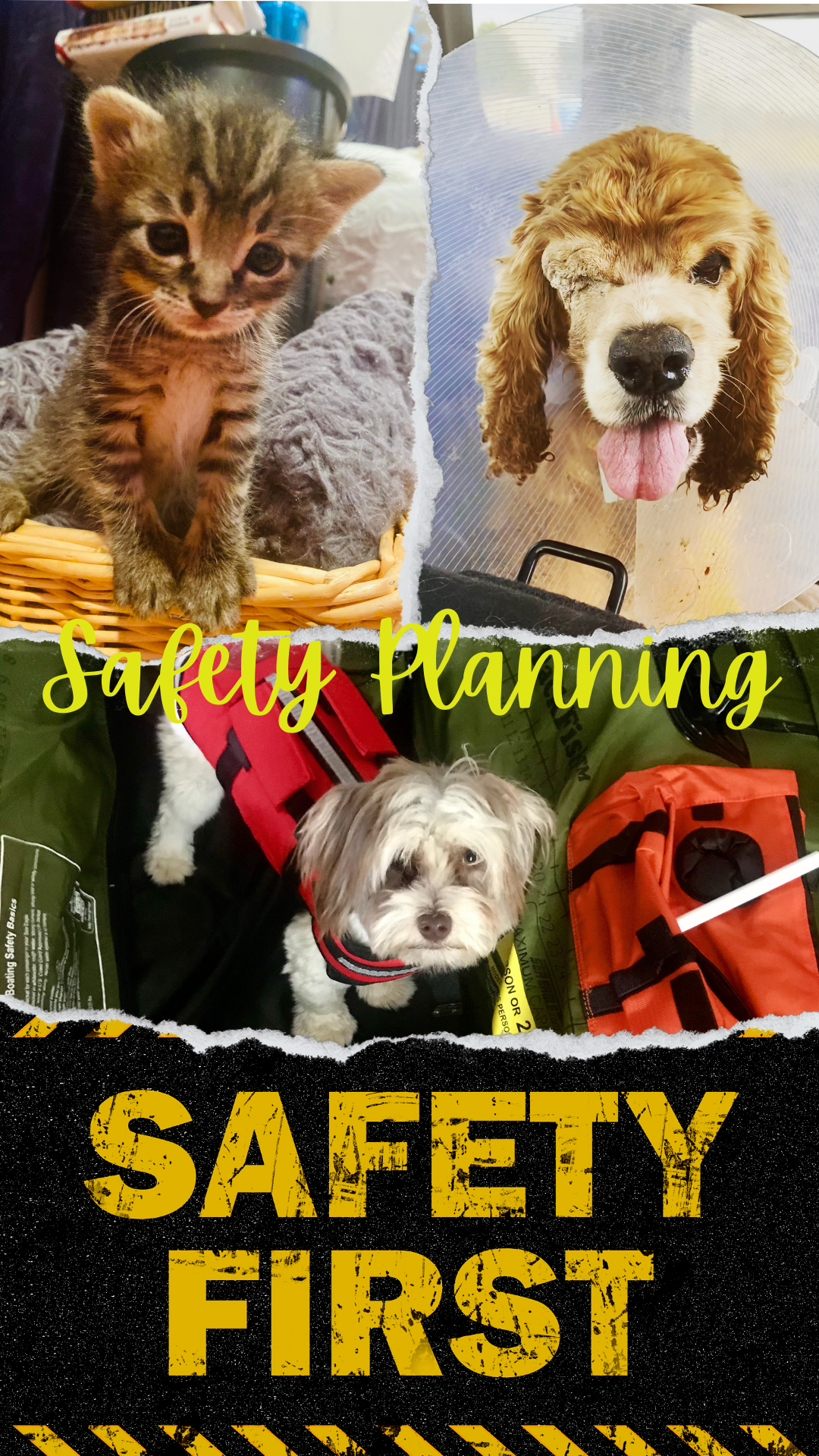I learned a lot of things after facing an emergency on the water with my dogs, and I know prevention and preparation can be our only hope at avoiding tragedy. In an emergency, things change quickly and it really puts my mind at ease to have a few easy things in place so I know I’m doing my very best to keep everyone I love safe.
If you’re like me, I didn’t think much about emergency planning – I always just thought I would figure things out if something happened, or I assumed that nothing terrible would happen to me. Here’s what I know now: safety is in preparation. When you’re making plans for terrible situations that may or may not come true, include your pets in your emergency planning. Fire safety gives me extra pause because I sleep upstairs and can easily get separated from many of the foster pets in my house, so I have tried to think through how things might play out in a house fire or other emergencies in which we need to evacuate, and here are a few steps I have taken to do my best to be ready for anything:
- Train your pets to come when you call them. This comes in handy for all kinds of day to day routines, but it is especially valuable in a life or death situation when time may be extraordinarily limited.
- Put together a disaster supply kit: In my car is a duffle bag with survival gear that I learned about in a seminar a few years ago. It includes things like a water filtration straw, hand warmers, a solar powered phone charger, a blanket, multi-purpose tool, etc. It also has several cans of dog food, a travel kennel (I should probably get a couple more of these, actually), leashes and copies of their vaccinations and medical records.
- I keep all the medication in a bin so it is easy to grab in an emergency. Mine happens to reside in the fridge because I have a diabetic foster dog at the moment and it doesn’t hurt the others’ pills to be a little chilled. Keeping the meds all together like this makes it convenient at mealtime/med dispensing time as well.
- Put the decals on your doors to alert first responders to the number of pets inside your home in case of a fire.
- Make sure everyone’s microchip information is up to date and that they have ID tags with your phone number.
- Pay attention to where your pets, especially cats, may go to hide. In an emergency, you will likely find them hunkered down there.
The American Humane Society has some tips for a house fire too:
- Attempt to grab your pet and exit the home as quickly as possible, but if it takes too long to locate or secure them, leave – You should never delay escape or endanger yourself or your family. Once responders get there, immediately inform them your pet is still inside, so they can go enter your home and continue looking for your pet.
- Grab leashes and carriers on your way out – outside will be chaotic and that may cause your pet to try to escape to a calm, safe area.
- Never go back inside a burning house. If you can’t find your pet, leave, open the door, and call to them repeatedly from a safe distance away. Let firefighters take over the task of locating your pet.
Stay safe and keep loving on those pets!

